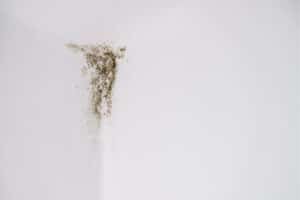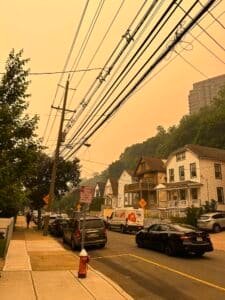Understanding the Causes of Water Damage on Apartment Ceilings
Water damage on apartment ceilings is a common issue that can be caused by a variety of factors. These can include leaky roofs, burst pipes, plumbing issues, or even weather-related events such as floods or hurricanes. No matter the cause, it is important to address water damage on apartment ceilings as soon as possible to prevent further damage and potential health hazards.
Leaky Roofs
One of the most common causes of water damage on apartment ceilings is a leaky roof. This can be caused by various factors such as damaged shingles, clogged gutters, or improper roof installation. When water seeps through the roof, it can damage the ceiling and cause unsightly stains, peeling paint, and even mold growth.
Burst Pipes
Another common cause of water damage on apartment ceilings is burst pipes. This can happen due to freezing temperatures, aging pipes, or even accidental damage. When a pipe bursts, it can release a considerable amount of water, which can quickly saturate and damage the ceiling.
Plumbing Issues
Apartments with multiple floors are at a higher risk for water damage on ceilings due to plumbing issues. If there is a plumbing issue on an upper floor, such as a toilet overflow or a burst pipe, it can quickly lead to water damage on the ceiling of the unit below. This can also occur when there is a clog in the building’s main sewer line, causing water to back up into multiple units.
Weather-Related Events
Extreme weather events such as floods or hurricanes can also cause water damage on apartment ceilings. When heavy rain or flooding occurs, water can seep through the roof or walls and cause significant damage to the ceiling. In these situations, it is crucial to address the water damage as soon as possible to prevent further structural damage.
Detecting Water Damage on Apartment Ceilings
Detecting water damage on apartment ceilings can be challenging, especially if the signs are not visible. However, there are some common signs to look out for that may indicate water damage on your ceiling.
Water Stains
Water stains are one of the most apparent signs of water damage on apartment ceilings. These stains can appear as discolored spots or patches on the ceiling, usually brown or yellow in color. If you notice water stains on your ceiling, it is essential to address the issue immediately before it leads to more severe damage.
Peeling Paint or Wallpaper
When water saturates the ceiling, it can cause the paint or wallpaper to peel or bubble. This is a sign that there is moisture present and could indicate water damage.
Sagging or Bulging Ceilings
If you notice your ceiling is sagging or bulging, it could be a sign of water damage. This occurs when water has accumulated behind the ceiling, causing it to sag or bulge. If left untreated, it could lead to a ceiling collapse, causing significant damage and potential injuries.
Mold Growth
One of the most dangerous consequences of water damage on apartment ceilings is the growth of mold. Mold thrives in moist environments and can quickly spread if not addressed promptly. If you notice mold growth on your ceiling, it is crucial to address the issue immediately to prevent health hazards.
Dealing with Water Damage on Apartment Ceilings
Addressing water damage on apartment ceilings should be a top priority for both tenants and landlords. Here are some steps to take when dealing with water damage in an apartment ceiling.
Report the Issue to Your Landlord
If you are a tenant, it is essential to report any signs of water damage to your landlord immediately. They are responsible for addressing the issue and ensuring that the necessary repairs are made to prevent further damage.
Inspect Upper Floors
If you are a landlord, it is crucial to inspect the unit above the one with water damage to determine the source of the issue. This will help address the root cause and prevent future incidents.
Turn Off Electricity
If there is significant water damage on the ceiling, it is crucial to turn off the electricity to that area to avoid any potential electric shocks.
Remove Water and Moisture
Using a wet/dry vacuum, remove any standing water from the affected area. Then, use fans and dehumidifiers to dry out the space thoroughly. It is crucial to address water damage within 24-48 hours to prevent mold growth.
Repair and Restore
Once the area is dry, it is essential to repair any damage to the ceiling, such as replacing damaged drywall or repainting. It is crucial to address any underlying issues, such as leaky roofs or pipes, to prevent future water damage.
Preventing Water Damage on Apartment Ceilings
Taking proactive measures can help prevent water damage on apartment ceilings. Here are some steps tenants and landlords can take to prevent water damage in the first place.
Regular Maintenance
Landlords should conduct regular maintenance checks on the building’s roof, plumbing, and gutters to ensure everything is in proper working condition. This can help identify any potential issues before they escalate.
Proper Insulation
Proper insulation can help prevent burst pipes and leaks, especially in colder climates. It is essential to insulate pipes and attics to prevent freezing and potential damage.
Monitor Weather Conditions
If severe weather is expected, such as heavy rain or snow, it is crucial to take precautions to prevent water damage. This can include clearing gutters and drains, sealing any cracks or holes in the roof, and ensuring that all windows and doors are properly sealed.
Act Quickly
If you notice any signs of water damage, it is crucial to act quickly and address the issue immediately. This can help prevent further damage and potential health hazards.
Conclusion
Water damage on apartment ceilings can be a daunting and costly issue to address. However, by understanding the causes, detecting the signs, and taking preventive measures, it is possible to minimize the risk of water damage and protect your apartment and health. If you are dealing with water damage on your apartment ceiling, follow the steps outlined in this article and consult a professional mold remediation contractor for proper cleanup and restoration.



